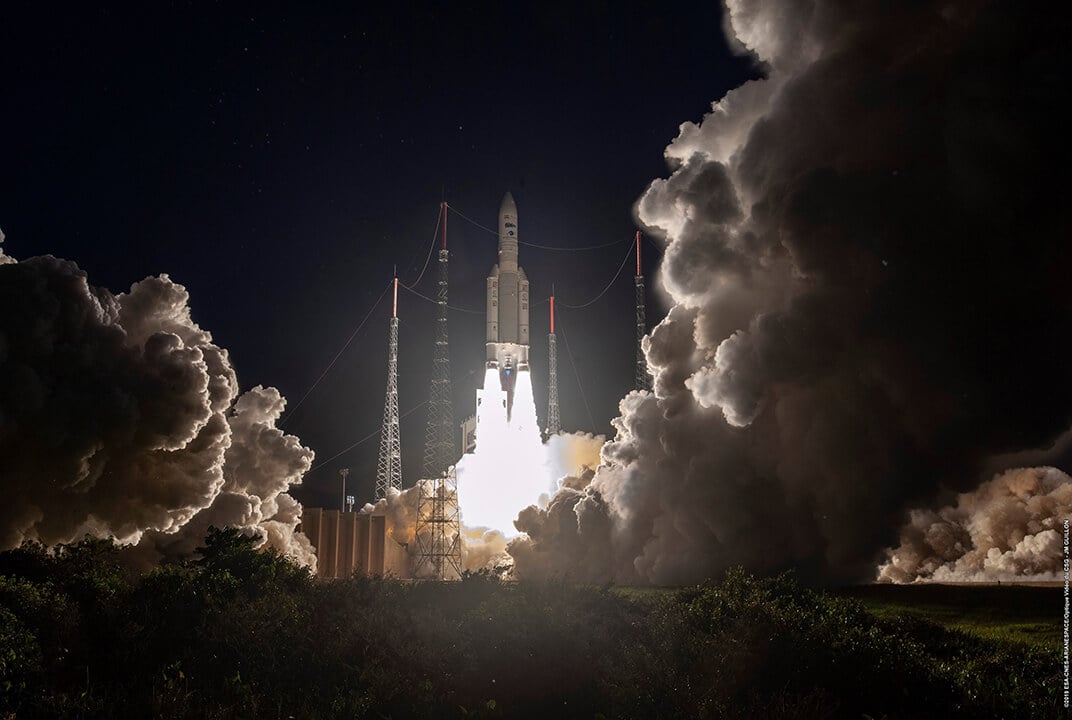Insight | “There is so much at stake” - testing an in-orbit satellite
“There is so much at stake” - testing an in-orbit satellite
null
In a sense, Felipe del Rey was born to work with satellites. He grew up in Chile hearing stories about the immense possibilities of space from his father, Richard del Rey, who worked as Digital Systems Specialist at the Santiago Satellite Station.
A childhood fascination grew into a skilled profession. After university, Felipe accepted an internship to work alongside his father at the station. Despite nearing retirement, Richard decided to stay on for a 42nd year in the industry, enjoying a once in a lifetime opportunity to train his son to step into his very own role. “It was a special experience for us both,” Felipe explains.
After five years in Santiago, Felipe moved to London in 2014 to study a Master’s in Telecommunications with Business at University College London. He and his wife fell in love with the city and - looking to stay perhaps another year - Felipe applied to Inmarsat’s Ground Control Systems team. One year turned into two, then three. Now eight years into his role at Inmarsat, Felipe has excelled at the company and found a home in satellite operations.
As Senior Tracking, Telemetry Command and In Orbit Testing Engineer, he now works with Inmarsat’s satellite ground network across the globe. For the last three months, he and a team of expert colleagues have been completing rigorous in-orbit testing for Inmarsat’s latest I-6 F1 satellite.
“There is so much at stake,” Felipe says. “I-6 F1 is the most sophisticated commercial communications satellite ever, and our first hybrid.” In this context, ‘hybrid’ means the satellites carries payloads using two different spectrum wave lengths (L-band and Ka-band): delivering an unprecedented range of capabilities.
“It is crazy complex from a technical perspective,” he explains. “That is exciting because it will be able to revolutionise global connectivity, but it means our testing must be equally meticulous. We cannot take any risks.”
Following its launch from Japan last December, I-6 F1 took seven months to reach its geostationary testing position, 36,000km above Earth. The journey was a relatively long one thanks to the spacecraft’s all-electric propulsion system, which is far more fuel efficient than traditional methods. Since it reached its orbit, Felipe and colleagues have been travelling between London and Inmarsat ground stations in Fucino, Italy, and Nemea, Greece, to calibrate physical equipment, gather detailed data and test I-6 F1’s performance.
“Space is an amazing industry,” Felipe laughs. “I don’t think there are many companies in which you would spend years designing, testing, and building advanced technology, before strapping it to the top of an explosive and hurling it into the sky at thousands of kilometres per hour.”
Those risks mean Inmarsat’s specialists need to operate in painstaking detail to successfully launch and operate its existing fleet of 14 satellites, where I-6 F1 will become number 15.
Unlike low Earth orbit (LEO) satellites, Inmarsat’s primary network operates in geostationary orbit, which requires large spacecraft that each can cover a third of the Earth’s surface. “We know I-6 F1 will vastly upgrade our services and bring new benefits to people all over the world,” Felipe says, “but this is not a process we can rush. It has been a difficult, daily challenge for all of us.”
So far, one of the biggest problems has been the weather. The team need the right meteorological conditions in which to operate ground station equipment and test the various technical features of the satellite. This has included lightning storms in Italy, which meant Felipe had to hide from the rain and wait to access precious data for analysis. “Patience, curiosity and precision,” he says. “It has been like a Rubik’s Cube. You test, you measure, you receive results you were not expecting, so you keep trying new ways to troubleshoot and re-test. Then you do that again, and again, and again.”
Across the industry, new launches have risen exponentially in recent years. The number of satellites in LEO has doubled in just the last two years alone. This revolution may have led to changes in public perceptions; while space still grabs headlines, many are still unaware of the immense possibilities of space technology.
“We see our technology differently,” Felipe explains. “We do not launch thousands of satellites knowing some might fail or deposit debris in the atmosphere. Our spacecraft are built to last and designed to be future-proofed. I-6 F1 and I-6 F2 will be providing global connectivity until 2040 and beyond for technology and services on Earth which do not even exist yet.”
“That makes me incredibly proud. Our satellites will redefine global, mobile connectivity now and in the future. Being a small, but important, part of that makes all our hard work worth it.”
Follow Inmarsat on social media for updates about the upcoming I-6 F2 launch.


